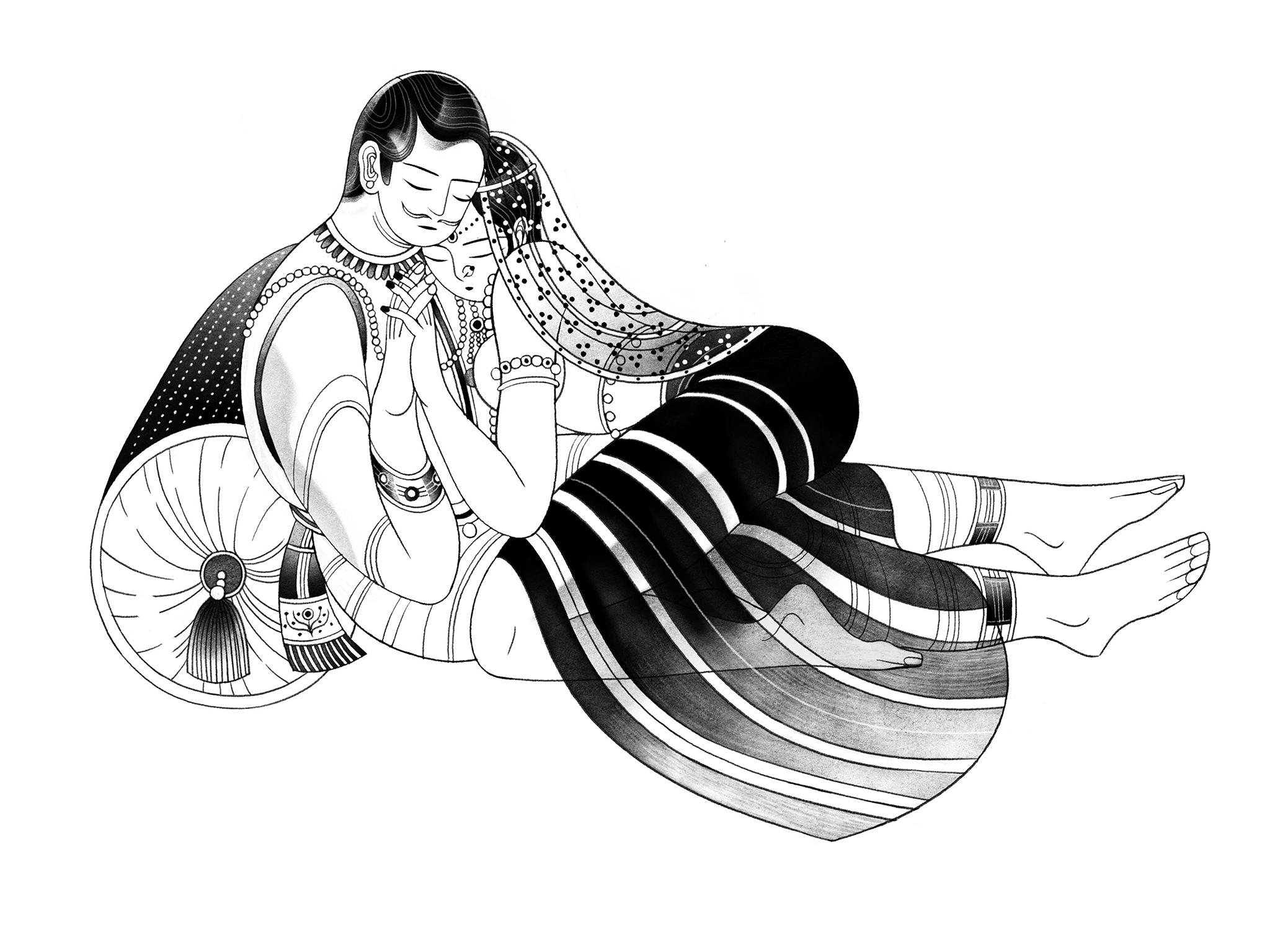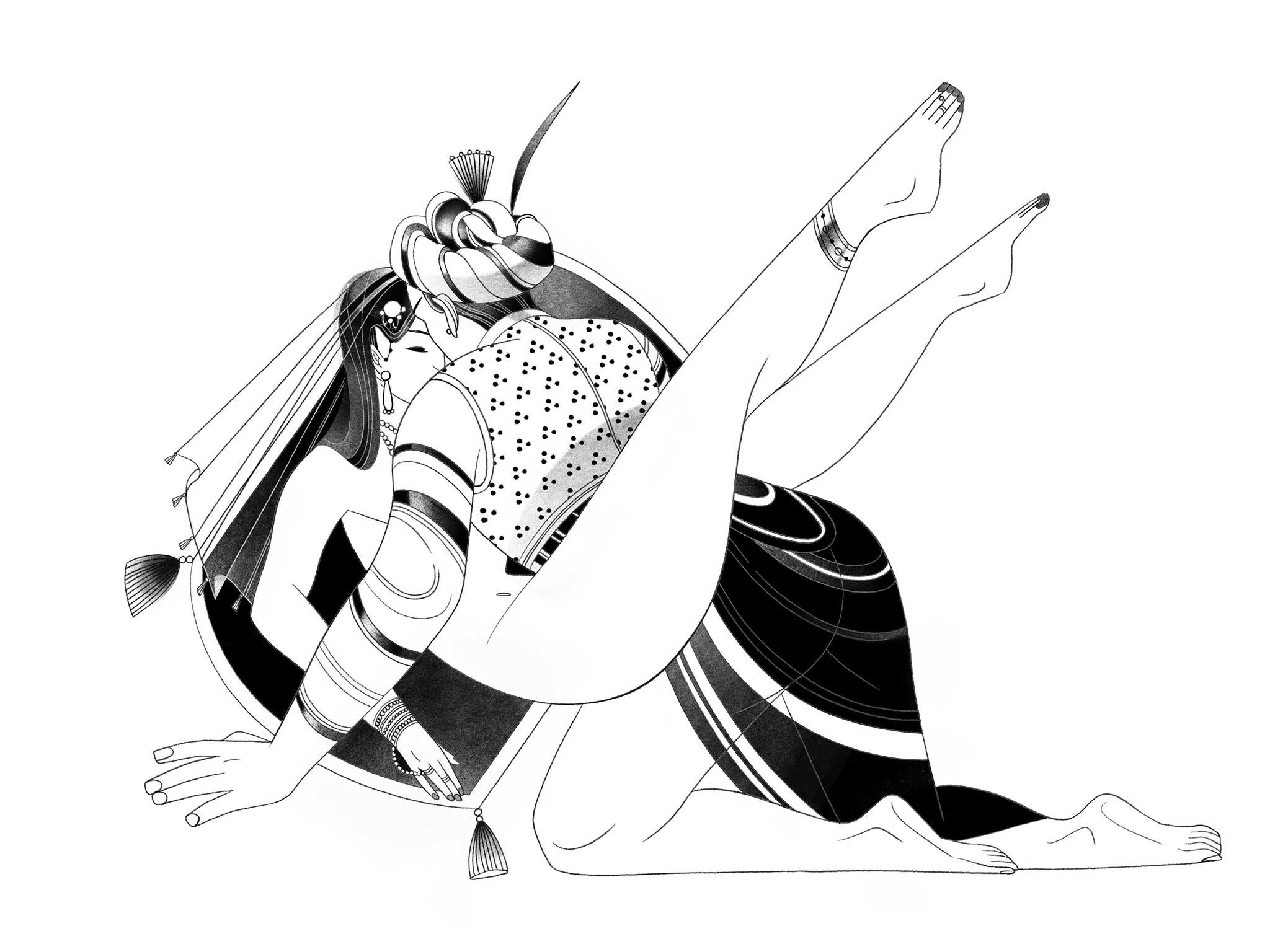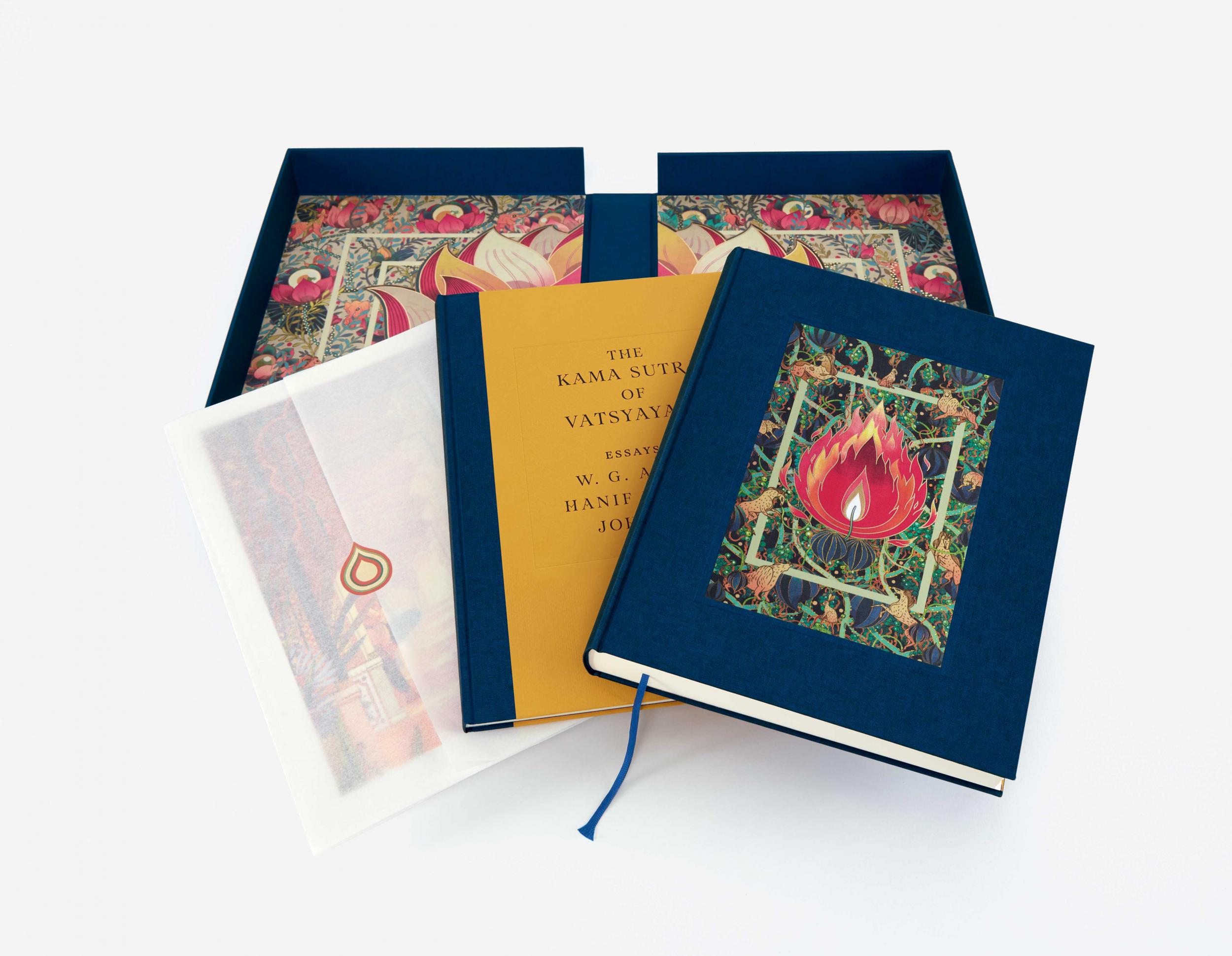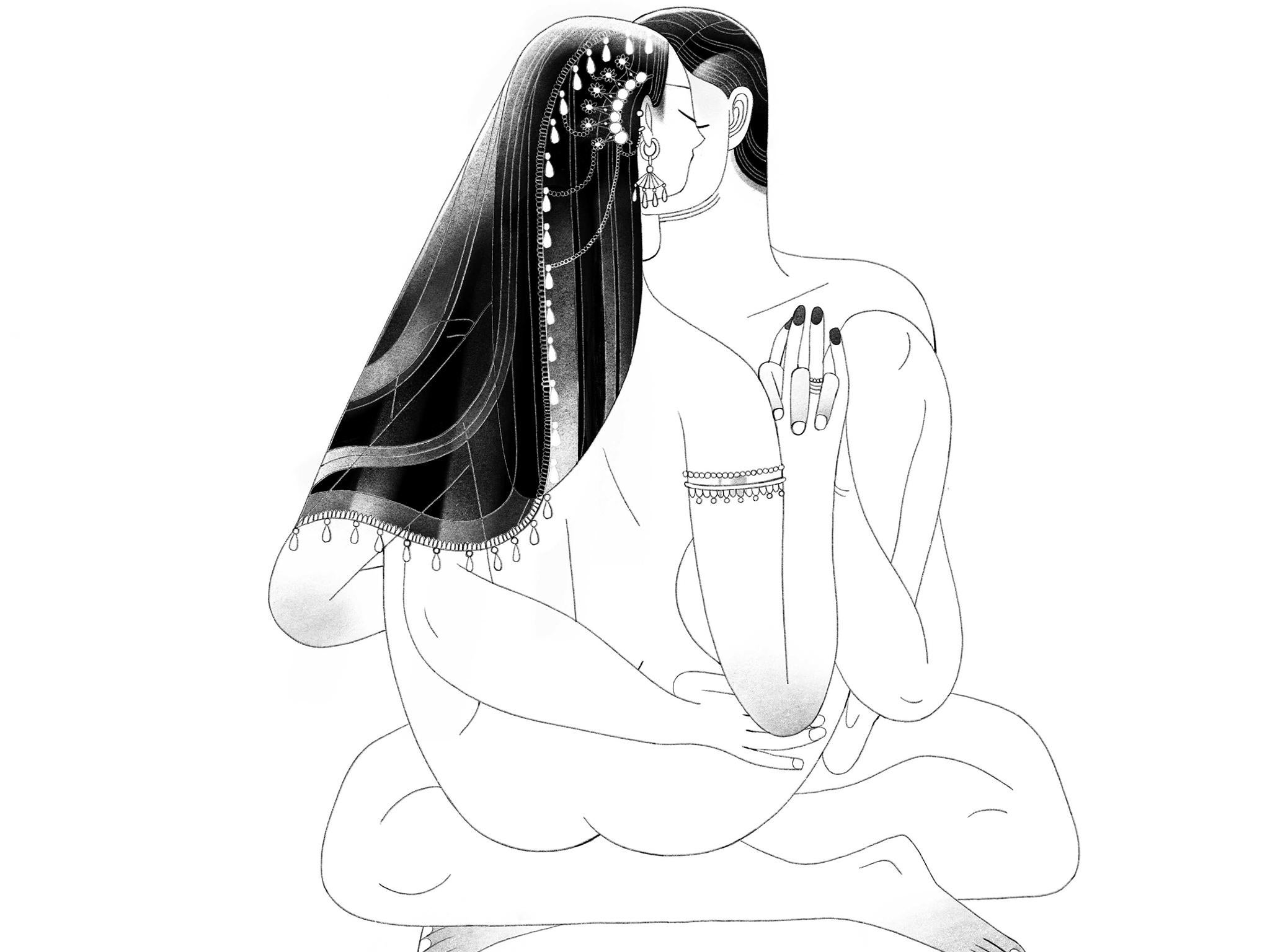Kama Sutra: new artistic edition proves the text is about more than just sex
The Kama Sutra is synonymous with inventive sexual positions – at least in the West. But perhaps, thanks to a Folio Society republication, not for much longer?
The elegant Folio Society produces only a handful of limited editions a year; all artistic but never pornographic. So you might wonder why such a society would pick now to republish a 2,000-year-old Sanskrit guide to sex positions – literary legacy notwithstanding.
But in fact (to give it its full title), The Kama Sutra of Vātsyāyana is only partially about sex. One-seventh, to be exact – or so the limited editions commissioning editor James Rose assures me.
A treatise on science, art and love, the text is an instruction manual for a holistic way of life, as outlined by philosopher Vātsyāyana for an enlightened, wealthy (and primarily male) audience. Inscribed on palm leaves, it advised on virtuous living and marriage.
In fact, the Sanskrit word kama (one of the four goals of Hindu life), means love and pleasure as well as sexual gratification, and most of the text deals with the philosophy of love and family.
But as Rose, admits: “It’s known predominantly in the West for its sexual positions.”

The Kama Sutra includes an impressive array of coital techniques – unfortunately some of which, according to the preface, “are either too acrobatic or too adjusted to Indian physiques and temperaments to be capable of general adoption”.
But Rose insists: “It’s much more than sex. It’s about living this happy life, with all of the pleasures – and part of that is sex, but part of that is just being married, or mastering the 64 arts and sciences that one should learn to live a full life.”
These vital skills are broad in scope: arrangement of household furniture; how to make money; how to hold the penis in the mouth; and of course, that well-known life goal: how to teach your parrot to talk after breakfast.
Christine Grant, Folio Society marketing manager, says with no overstatement: “It’s just the craziest collection of things you need to do.”
But she stresses that what’s most important is the emphasis on pleasure equality. It might have been written for men, but much of the text offers guidance for how to give their wives a good time.
“It’s not just men having fun,” she says. “It explains very carefully what husbands need to do to keep their wives happy: how they should approach them, how gentle to be with them – you don’t even touch them at first. It’s incredibly detailed, and it’s still so relevant today.”
As are, presumably, chapters like “The reason why Women reject the Addresses of Men”, and “About Men who have Success with Women”.

The edition is based on the first translation from 1883, by Brahmin scholar Bhagwan Lal Indraji, commissioned and overseen by explorer Sir Richard Burton and civil servant Forster Fitzgerald Arbuthnot, in a story almost as fascinating as the text itself.
Burton, a linguist, orientalist, diplomat and spy, was fascinated by Indian culture and had a particular penchant for the erotic – or, as the preface essay by historian WG Archer terms it, “a ferocious interest in sex; a fascination with every possible variety … with no comprehension of women”.
Arbuthnot, his close friend, had a similar taste – in terms of love of India via his civil service work there, and in general interest in the sexual habits of unfamiliar cultures. But he also believed that Victorian marriage was unpleasant and defunct, and hoped the text would encourage matrimonial harmony. The whole population would benefit, he was sure, if everyone made better love to their wives.

“Many a life has been wasted,” he later wrote, “and the best feelings of a young woman outraged, by the rough exercise of what truly become the husband’s ‘rights’ … the master either swoops down on his prey like a vulture, or what is just as bad, sins by ignorance … either a cruel brute or a stupid bungling fool.”
But none of these names was included in the first edition. Indeed, they had to invent a society to publish it, in order to avoid censorship and backlash. The fictional “Kama Shastra Society” printed the first edition in the equally fictional “Cosmopoli”.
Their translation opened one of the great Indian classics to the West, and almost at once it aroused notice. Some Victorians, of course, were not amused.
“Hardly had we begun,” wrote Burton later, “when ‘Respectability’, that whited sepulchre full of all uncleanness, rose up against us.”
But it was reprinted, then retranslated into French, then pirated in India, and before long the Kama Sutra had sparked a global fascination with Indian studies and the Hindu erotic.
Like other indulgences, sex in ancient India was considered a bonus in life, so the embarrassment and disapproval the Kama Sutra provoked in subsequent centuries would have been quite baffling to Vātsyāyana.
Rose believes the light it shines on ancient Hindu society is crucial. “It’s a sort of historical document: a really good window into a society that’s now gone.”
This might be the latest in a long line of editions, but it is far from run of the mill. In fact, there will only be 750 copies – as Grant says, it’s never going to be in Waterstones.
And it’s a behemoth of a book: beautifully presented in a blue cloth-bound gold-blocked solander box. From the outside, it’s elegant but discreet. You could keep it on your coffee table, in fact.
But once you open this Pandora’s box, you’re hit with the riotous colour of the lining: a sensuous silky material inlaid with illustrations and gold, with the male lingam (penis) and female yoni (vulva) both gleamingly represented.
At the start of each section, a coloured frontispiece plate highlights a key aspect of the chapter, while 25 black and white illustrations of sexual positions are liberally dotted throughout the text.

Each edition includes a signed print of a separate illustration, for framing. Luckily it’s far from explicit: only when you look closer do you see a couple locked in “the embrace of thighs”.
As Rose puts it, “It’s erotic but not offensive.” It could hang in one's hallway.
The edition comes with a separate volume of essays and commentary, including a preface written by WG Archer for the 1962 edition, and an essay by award-winning novelist and playwright Hanif Kureishi.
What was missing, says Rose, was a piece about the importance of the text within Hindu society. That’s why he commissioned historian John Keay to write an essay on the pivotal role of sensuality in ancient Indian society, fixing the Kama Sutra in its originality.

This is, as you might imagine, a very visual text, so the right illustrator was vital. Folio Society art director Sheri Gee tells me wryly: “Not many illustrators I’ve come across happen to have sketched work for the Kama Sutra or similar. Life drawing is perhaps the closest I’d get.”
Back in 2014, when Gee was chairing a panel discussion at the Society of Illustrators in New York, she asked the guest illustrators: “If you could illustrate any book, what would it be?”
That’s when one of the guests, LA-based Hong Kong artist Victo Ngai replied: “The Kama Sutra.”
That said, Ngai tells me that she “hadn’t the faintest idea” of what the Kama Sutra was really like before starting on this project.
“The main reason why I was eager to be on board was that the book seemed like a perfect excuse to play with designs and colours inspired by traditional Indian art, which I have developed a deep fascination with. I knew from the beginning that this project would be an ambitious endeavour.”

Ngai says that she wanted the figures to “be tantalising but not overtly sexual, provocative yet graceful, elegant without being too coy”.
“In short, how to draw them was a fine line to walk, and it took me several rounds to get it right.”
Even so, surely the images could present a thorny problem for marketing? Grant admits they had to be careful about what would turn up on phones or laptop screens – or the leaflet advertising the edition, which “only includes pictures anybody could look at”.
“An eight-year-old could see these and not be shocked. But there is a warning that the text is far more explicit inside – although I hope most people are already aware that the Kama Sutra has some rude bits.”
But luckily, says Vicki Traino, head of PR and digital for the Folio Society, a lot of the black and white drawings are “just people having a lovely kiss”.
Although, she admits, “I never thought I’d have to discuss our nipple policy with advertisers.”
And what, I have to ask, are the advertisers’ nipple policies?
Traino replies: “Nipples are fine!”
The Folio Society edition of The Kama Sutra of Vatsyayana, illustrated by Victo Ngai, is available exclusively from foliosociety.com from 7 June
Join our commenting forum
Join thought-provoking conversations, follow other Independent readers and see their replies
Comments